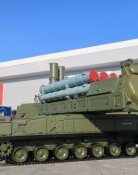[Opinion] Northern East Asia Is Focal Point of US Defense Strategy
[Opinion] Northern East Asia Is Focal Point of US Defense Strategy
Posted October. 18, 2001 09:28,

US President George W. Bush ordered the Department of Defense to form a long-term defense strategy as the `War on Terrorism` began. He commanded that the center of US military operations abroad be moved from Europe to the Pacific Rim.
In connection to this, the most recent Quadrennial Defense Review, issued by the American government every four years, shows signs of strengthening the military headquarters in the Pacific Rim.
US troops stationed in Korea are also gearing up for a new stage of operations that will expand US defense installments, like the current US naval bases in Okinawa, in Asia. Currently, the US administration is looking into further utilize US military bases in Korea and considering moving the Seoul headquarters to a new location. This is a very significant change when taking into consideration that the US defense planners were looking to reducing US military presence in South Korea.
Admiral Dennis Blair who commands the Asia Pacific headquarters explained, ``The important thing is that among the areas in which American interests are at stake, Asia will become more and more important.``
In a recent interview with the writer, Admiral Blair said, ``The `Big Three` regions for the US was always Europe, Southwest Asia, and East Asia in that order. Now, East Asia is number one with Southwest Asia and Europe next.`` Southwest Asia refers to the Middle East and Central Asia.
``East Asia is organized into the East Asian region which has the Korean peninsula at the center and includes Taiwan, and also the Southeast and South Asian region.`` added Admiral Blair.
The shift in attention is further evidenced by the fact that Asia used to be a last priority in closed door discussions about national security but is now the first topic to be discussed.
The recent issue of the QDR, which was published on September 30, is the first document to officially disclose President Bush`s national defense goals for the US.
Although the QDR was quickly revised after September 11, the general framework did not change too much. The revised edition emphasizes the importance of US homeland security and makes this the first priority of the Department of Defense.
The QDR issue does not articulate the importance of Asia in detail, but the following implications can be spelled out in light of US defense officials such as Admiral Blair.
First, Guam which is centrally located in the Pacific will be used as the strategic hub for the US military`s main operations. The military will install three submarines, air maintenance and repair facilities, and increased ammunition and fuel supplies within the next year.
Second, although the US does not plan to build new military bases in Asia, it will use ally military bases such as in Australia in emergency situations. Military relations will be strengthened through joint training programs. US military bases in Okinawa, Japan will become more important.
Third, US aircraft carrier fleets will spend longer periods in the western Pacific and Indian seas. Also, six aircraft carriers stationed in the Pacific headquarters will team up with carriers currently in the Atlantic ocean in order to conduct a reconnaissance operation.
Fourth, the US military is planning to build a home port for 3 to 4 battleships in the Pacific as a part of the Theater Missile Defense system. The missile disarmament treaty which the US signed in the past requires that the number of nuclear missile submarines be reduced. The US is investigating ways to arm submarines with Cruise missiles instead of nuclear ones and to increase the number of battleships armed with Cruise missiles.
For the past several years, US ally nations in Asia have been greatly concerned about when and how much the US will reduce its military presence in the Pacific Rim. The recent QDR shows that the US has not intention of reducing its military presence in the Pacific.
Richard Halloran (Freelance Reporter, Asia Defense Policy Consultant)
Headline News
- Ukraine says N. Korea’s first troops arrive in Kursk
- N. Korea begins installing barriers on Donghae Line after 'bombing show'
- K-defense operating profit expected to jump by 200% in Q3
- Seoul City launches DDP rooftop tours, celebrating 10th anniversary
- Ahn Jung-geun’s historic writings return to Korea in 15 years







